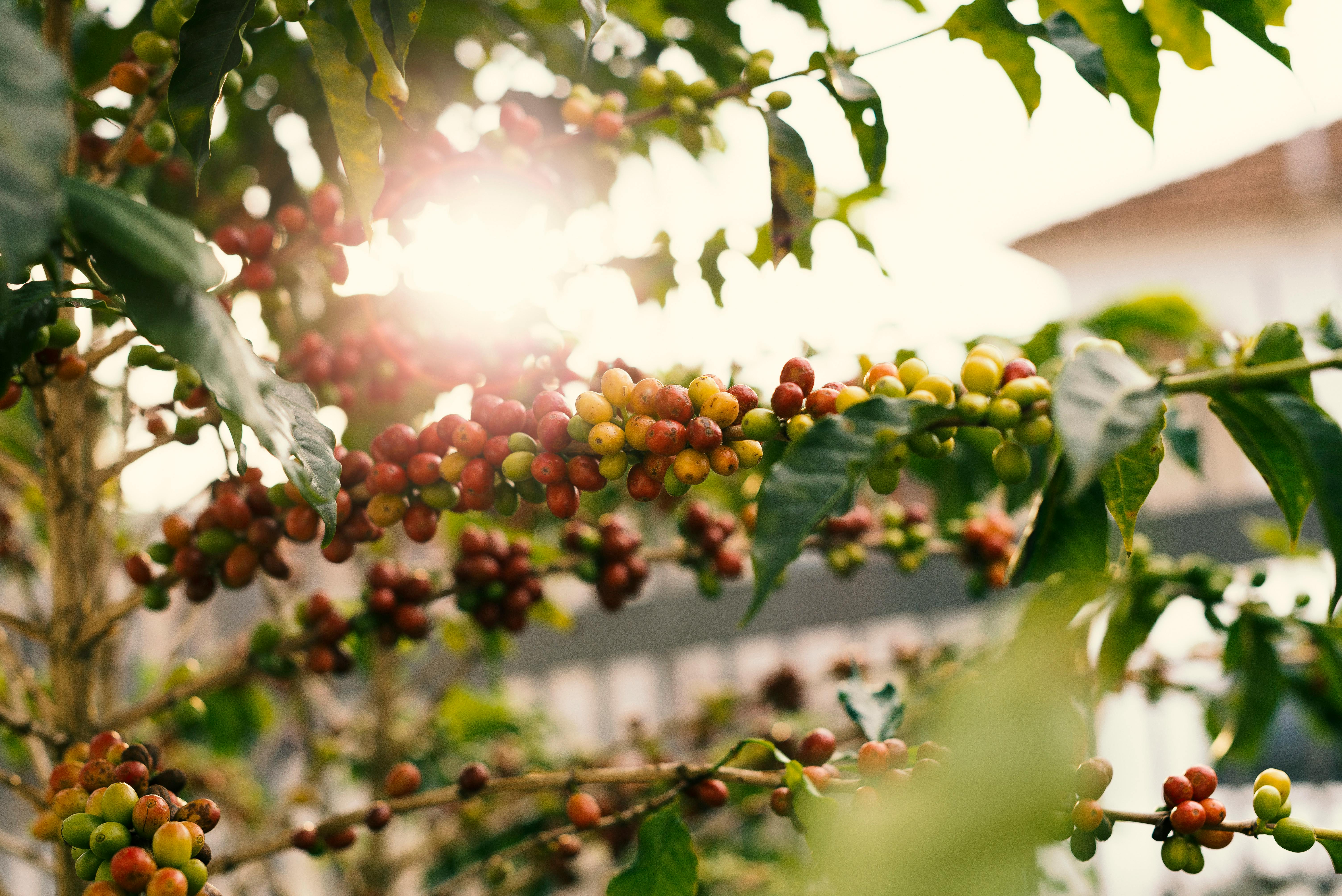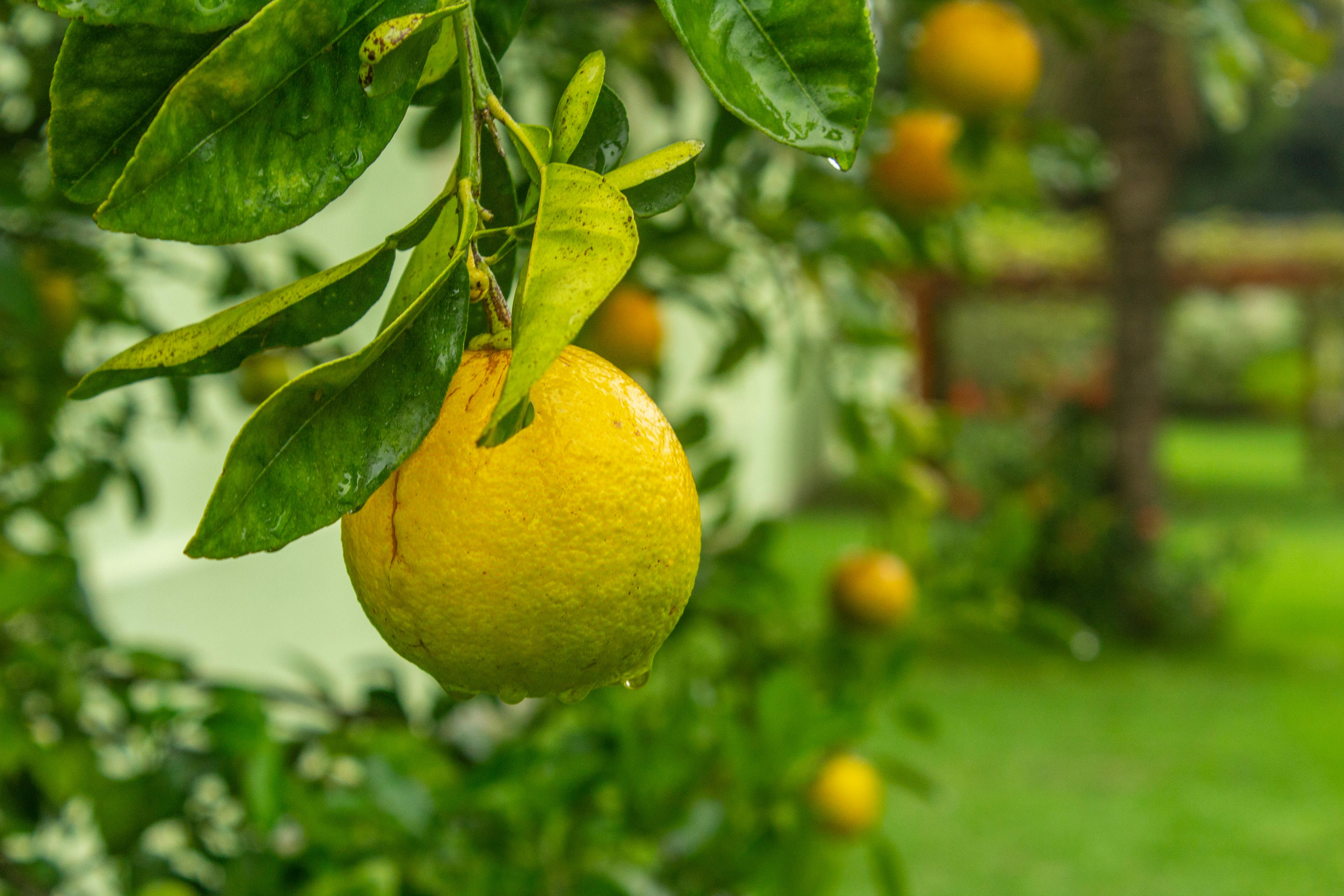One of the most common issues gardeners face is why their lemon tree doesn’t produce fruit. Though a lemon tree has the potential to produce beautiful and delicious lemons, there are a number of environmental and cultural factors that can lead to a lack of fruit production. Understanding these factors is important for successful lemon production, as it will help you identify and correct any problems your tree may be having.There are several potential reasons why a lemon tree may not produce fruit. These include inadequate sunlight, over-watering, under-fertilizing, or a lack of pollination. Trees need at least six hours of direct sunlight each day to flower and bear fruit. If the tree is not receiving enough light, it may fail to produce flowers and fruit. Over-watering can cause root rot, which can prevent the tree from growing normally and producing fruit. Under-fertilizing can also limit the amount of nutrients available to the tree, resulting in poor growth and decreased fruiting. Finally, if there are no pollinators present such as bees or hummingbirds, the flowers will not be pollinated and thus will not develop into fruit.
Environmental Factors Affecting Lemon Tree Fruit Production
Lemon trees are a popular choice for many gardeners because of their low maintenance requirements and delicious fruit. However, in order to produce a good crop of lemons, the environment in which the tree is planted must be carefully considered. Various environmental factors can affect the growth and fruit production of a lemon tree, including temperature, water availability, soil pH and nutrition.
Temperature is an important factor in lemon tree growth and production. Lemon trees prefer temperate climates with mild winters and hot summers, with temperatures ideally ranging between 15 to 30 degrees Celsius. During cold winters, temperatures below 10 degrees Celsius can cause damage to young lemon trees, while temperatures above 35 degrees Celsius can be too hot for mature trees.
Water availability is also key to successful lemon tree growth and production. Lemon trees need sufficient water throughout the growing season to produce healthy fruit; however, they are also susceptible to root rot from overwatering or flood conditions. It is important to monitor rainfall levels as well as irrigation availability when planting a lemon tree.
Soil pH affects the nutrient availability of a lemon tree’s soil environment. Lemon trees prefer slightly acidic soils with a pH range between 6-7. Tests should be done periodically to monitor soil pH levels and ensure that they remain within this range for optimal citrus growth and production.
Nutrition is essential for successful lemon tree production. Trees need adequate amounts of nitrogen, phosphorous, potassium and micronutrients in order to produce healthy fruit. Soil tests should also be done periodically to evaluate nutrient levels in the soil so that fertilizer applications can be adjusted accordingly when needed.
In conclusion, there are several environmental factors that must be considered when planting a lemon tree in order to ensure optimal growth and production of healthy fruit. Temperature, water availability, soil pH and nutrition all play an important role in ensuring successful lemon tree cultivation and harvest yields..
Growing Conditions for a Healthy Lemon Tree
Lemon trees require a warm climate to thrive and produce healthy fruit. Ideal temperatures range from 65 to 85°F (18–30°C). During winter months, the tree should be protected from temperatures below 40°F (4°C). Lemon trees need full sunlight for at least 6-8 hours a day in order to bear fruit. It is also important that the soil is well drained and rich in nutrients. Mulching around the base of the tree can help keep moisture in the soil and protect it from extreme temperatures. Regular watering and fertilizing with a balanced fertilizer are also essential for healthy lemon trees. Pruning should be done during the springtime to remove dead branches or any suckers that may grow from the base of the tree. Finally, watch for pests and disease that can harm your lemon tree, and take appropriate action if necessary.
Identifying Nutrient Deficiencies in a Lemon Tree
It is important to identify nutrient deficiencies in a lemon tree in order to ensure its health and productivity. Nutrient deficiencies can cause yellowing or discolored leaves, stunted growth, and reduced fruit production. To identify what nutrients may be lacking, it is necessary to inspect the tree for signs of deficiency.
The first step in identifying nutrient deficiencies is to check the soil pH. The soil should be slightly acidic with a pH between 6.0 and 7.0. If the pH is too high or low, it may indicate a lack of available nutrients in the soil needed for healthy growth and fruit production. It can also be beneficial to test the soil for other essential nutrients such as nitrogen, phosphorus, potassium, magnesium, and calcium.
In addition to checking the soil pH and nutrient levels, it is also important to inspect the leaves of the tree for signs of deficiency. Pale green or yellowing leaves can indicate a lack of nitrogen or iron in the soil while brown spots or streaks on the leaves may indicate a lack of magnesium or potassium deficiency.
Finally, if all other factors have been ruled out, it may be beneficial to use foliar fertilizers as a method of supplying missing nutrients directly to the tree’s foliage. Foliar fertilizers are sprayed onto plant leaves where they are absorbed directly into the plant’s tissues providing quick relief from nutrient deficiencies without having to adjust soil conditions.
By taking these steps it will be easier to determine what nutrients may be lacking from your lemon tree and how best to address them so that your tree can reach its full potential in terms of health and fruit production.
How to Treat Nutrient Deficiencies in a Lemon Tree
Caring for a lemon tree is an important part of ensuring it grows and produces fruit. Since lemon trees require specific nutrients to thrive, it’s important to be aware of any nutrient deficiencies that may arise. If your lemon tree is not getting the nutrients it needs, you should take action to treat the deficiency as soon as possible. Here are some tips on how to treat nutrient deficiencies in a lemon tree.
The first step in treating nutrient deficiencies is to identify the deficiency. In order to do this, you should inspect the leaves of the tree for signs of discoloration or yellowing. If the leaves are discolored or yellowed, then this could indicate a nutrient deficiency. Once you have identified the deficiency, you can begin to take action to remedy it.
The most common way to treat nutrient deficiencies in a lemon tree is through fertilization with a fertilizer that contains the necessary nutrients for optimal growth and health. You can also supplement your fertilizer with liquid fertilizer applied directly to the soil around your tree. It’s important not to over-fertilize, however, as this can cause more harm than good and damage your plants’ roots and leaves.
In addition to fertilizing your lemon tree, you should also make sure it has adequate water and sunlight. The amount of water and sunlight varies depending on where you live and what type of climate you have, so be sure to research what is best for your particular area before making any changes. Proper watering and sunlight exposure can help prevent future nutrient deficiencies from occurring in your tree.
Finally, if all else fails, you can consider adding additional amendments such as compost or manure directly into the soil around your lemon tree. This will provide additional nitrogen and other essential nutrients that will help ensure its health and growth. Be sure not to add too much compost or manure at once though as this could overwhelm your soil with too many nutrients at once which could lead to plant stress or even death if left unchecked.
By following these tips on how to treat nutrient deficiencies in a lemon tree, you can ensure that your citrus trees grow strong and healthy for years to come!

Controlling Insect Pests That Affect Lemon Trees
Lemon trees are susceptible to a variety of insect pests, which can cause damage to the tree and reduce fruit production. It is important for lemon tree owners to be aware of the common pests that can affect their trees and take steps to control them. Common insect pests of lemon trees include aphids, scale insects, mealy bugs, thrips, mites and whiteflies.
Aphids are small, soft-bodied insects that feed on the sap of the leaves and stems of the lemon tree. They produce honeydew which attracts ants. Aphids can be controlled by applying an insecticidal soap or horticultural oil spray. These sprays should be applied in late summer or early fall when aphid populations are at their highest.
Scale insects are small insects that feed on the sap of the leaves and branches of the lemon tree. They produce a waxy coating that protects them from predators. Scale insects can be controlled by applying an insecticidal soap or horticultural oil spray to areas where they are present.
Mealybugs are small, white-colored insects that feed on the sap of the leaves and stems of the lemon tree. They excrete a sticky, sugary substance known as honeydew which attracts ants and other pests. Mealybugs can be controlled by applying an insecticidal soap or horticultural oil spray to areas where they are present.
Thrips are tiny black or brownish-colored insects that feed on the sap of the leaves and stems of the lemon tree. They produce a fine dust which is easily visible in sunny areas near leaves or flowers. Thrips can be controlled by using an insecticide spray or by simply removing them with your fingers or a vacuum cleaner attachment designed for pest removal.
Mites are tiny arachnids that feed on plant sap from beneath leaves and stems of citrus trees such as lemons. They cause yellow spots on leaves as well as distorted foliage growth patterns due to their feeding activities. Mites can be controlled by applying an insecticide spray designed specifically for mite control such as sulfur dust or neem oil products.
Whiteflies are small flying insects that suck plant juices from leaves and stems causing yellow spots on foliage as well as reduced growth rates due to their feeding activities. Whiteflies can be controlled by using an organic pesticide such as neem oil which when sprayed onto affected areas will stop whitefly activity within one day.
In order to prevent future infestations, it is important for lemon tree owners to practice good cultural practices such as proper pruning techniques and avoiding over-watering their trees so that they do not attract these common pests in large numbers again in future seasons.
Pruning Your Lemon Tree for Optimal Fruit Production
Pruning your lemon tree is an important part of keeping it healthy and producing the most fruit possible. Pruning helps to control the size and shape of the tree, as well as promote new growth. It also helps to control pests and diseases that can affect the fruit production. Pruning your lemon tree should be done on a regular basis, usually in early spring before new growth begins.
When pruning your lemon tree, you should start by removing any dead or diseased branches. This will help to keep your tree healthy and free of any potential problems. You should also remove any branches that are crossing or rubbing against each other, as this can cause damage to both branches. When removing branches, make sure you use sharp pruning shears so that you don’t leave any jagged edges behind.
Next, thin out any overcrowded branches on your lemon tree. Thinning out too many branches can cause a lack of air circulation within the canopy of the tree, which can lead to disease and pest infestations. If done properly, thinning out overcrowded branches will encourage new growth and help promote more fruit production in the future.
Finally, shape your lemon tree by cutting back any long or leggy shoots that are growing out of the canopy of the tree. This will help maintain an attractive shape while allowing more light to reach inside the canopy where fruits are produced. If you’re unsure how much pruning is necessary for your particular lemon tree, consult with an arborist for advice before proceeding with any major pruning work.
Overall, pruning your lemon tree is essential for keeping it healthy and producing plenty of delicious fruit! By following these simple steps, you can ensure that your lemon tree is well-maintained and ready to produce a large crop each year!
Proper Watering Techniques for a Healthy Lemon Tree
Water is essential for the growth and development of any plant, and lemon trees are no exception. Lemon trees need regular water to thrive, but it’s important to make sure you’re not over-watering them. Too much water can cause root rot and other issues. To ensure that your lemon tree is getting the proper amount of water, here are some tips:
• Monitor soil moisture – The best way to know if your lemon tree needs watering is by monitoring the soil moisture. Stick your finger into the ground about two inches deep and if it feels dry, it’s time to water. If it feels damp, wait another day or two before watering again.
• Water deeply – When you do water your lemon tree, make sure you’re giving it enough water to reach the roots. This means thoroughly saturating the entire root zone with each watering session. A good rule of thumb is to give it at least an inch of water per week during the growing season (April through October).
• Avoid frequent light watering – It may be tempting to give your lemon tree a light sprinkling every few days in order to keep it from drying out too quickly. However, this can actually do more harm than good as frequent light watering encourages shallow rooting which makes your tree more prone to drought stress and disease.
• Mulch around the base – Adding a layer of mulch around the base of your lemon tree helps retain moisture in the soil and discourages weed growth.
By following these tips you can ensure that your lemon tree gets just enough water for healthy growth without over-watering or under-watering it. With proper care and attention, you’ll be able to enjoy plenty of juicy lemons!

Conclusion
While there are many potential reasons for why my lemon tree isn’t producing fruit, the most likely cause is inadequate sunlight, soil nutrition, and water. If I am able to provide these conditions that the tree needs to thrive, I should see some results in the form of fruit production. It is also important to check for pests and diseases that can damage the crop and reduce yields. With some patience and dedication, I am confident that I can successfully encourage my lemon tree to produce fruit.
In conclusion, it can take some time and effort to get a lemon tree to produce fruit. However, by providing adequate sunlight, soil nutrition, water, and checking for pests or diseases, I should be able to encourage the lemon tree to produce a delicious crop of lemons.



